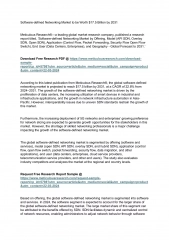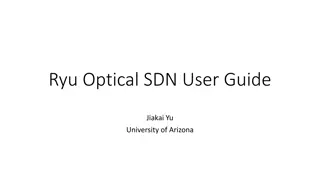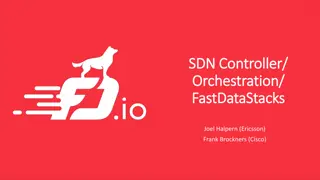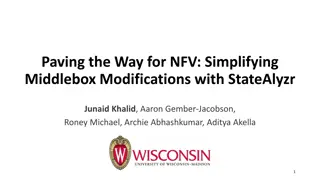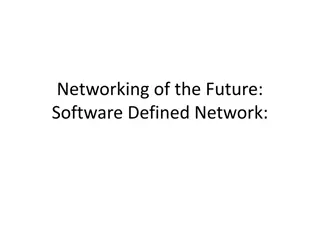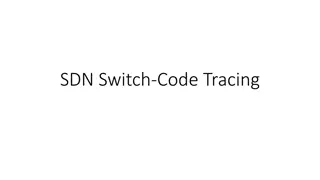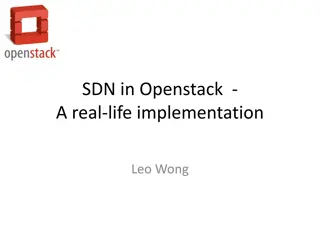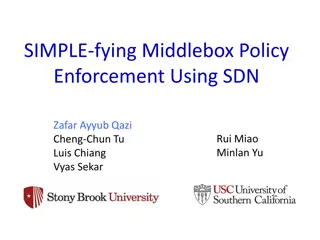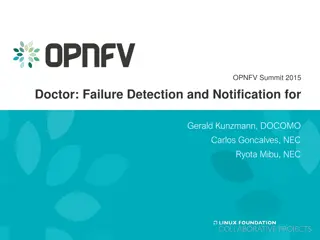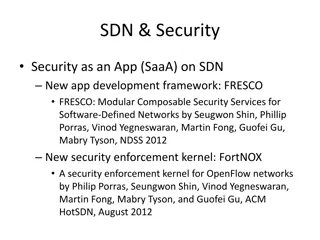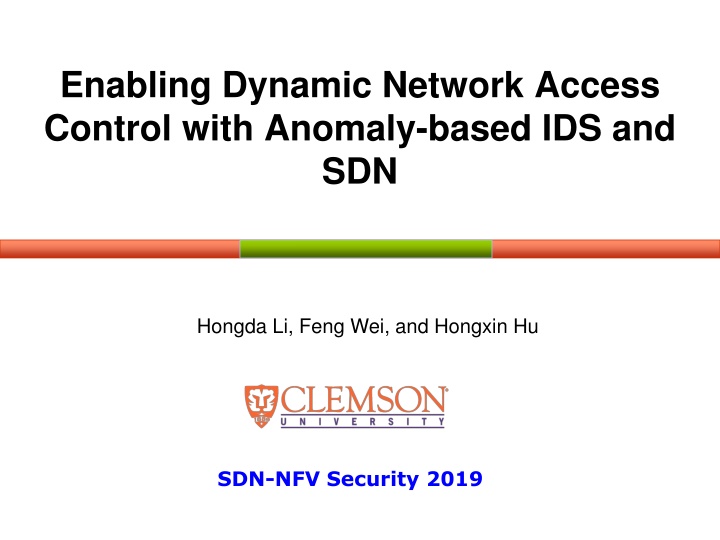
Enhancing Network Security with Anomaly-based IDS and SDN
"Discover how dynamic network access control is achieved using Anomaly-based Intrusion Detection Systems (IDS) and Software-Defined Networking (SDN). Explore the integration of machine learning models, access control policies, and explanation mechanisms in securing modern networks."
Download Presentation

Please find below an Image/Link to download the presentation.
The content on the website is provided AS IS for your information and personal use only. It may not be sold, licensed, or shared on other websites without obtaining consent from the author. If you encounter any issues during the download, it is possible that the publisher has removed the file from their server.
You are allowed to download the files provided on this website for personal or commercial use, subject to the condition that they are used lawfully. All files are the property of their respective owners.
The content on the website is provided AS IS for your information and personal use only. It may not be sold, licensed, or shared on other websites without obtaining consent from the author.
E N D
Presentation Transcript
Enabling Dynamic Network Access Control with Anomaly-based IDS and SDN Hongda Li, Feng Wei, and Hongxin Hu SDN-NFV Security 2019
Outline Motivation Background Our Approach Case Study
Network Access Control with SDN FlowGuard [HotSDN 14] Dynamic Firewall [RAID 15] Virtual Firewall [NDSS 17] Access Control Policies How to generate new ACP? Unknown vulnerabilities Anomaly Zero-day security threat
Existing Anomaly-based IDS Semantic Gap Access Control Policies Uncover novel security threats Obscure outcome
Machine Learning Model Explanation CAT Predictor DOG Input Outcome Explanation
Explanation Mechanisms Black Box x y Whitebox Blackbox x1 y1 xi yi xn yn Local Explanation Global Explanation
Local & Blackbox Explanation 1. Local Approximation 2. Explanation Logic ????????? e? ? e ? Why ? is predicted as circle?
Approach Overview SDN Controller SDN Flow Rule Access Control Policy Mirrored Traffic AIDS Outcome Outcome Explanation Anomaly-based IDS Outcome Explanator Policy Generator SDN Switch
AIDS Outcome Explanation 1. Local Approximation 2. Explanation Logic Linear Regression F(x) x Feature Importance ?: (duration, proto_type, service, flag, src_byte, dst_byte, ) FI: (97, 96, 99, 100, 95, 98, )
Access Control Policy Generation <filers, actions> Selects network entities Defines action to take Networks; Hosts; Connections; Flows; Packets; Combination of above; Allow; Deny; Redirect; Quarantine; Mirror; ?: (duration, proto_type, service, flag, src_byte, dst_byte, ) FI: (97, 96, 99, 100, 95, 94, ) Explanation
Case Study: AIDS Recurrent Neural Network (RNN) Detect across multiple records NSL-KDD dataset 41 raw feature Keras + TensorFlow for implementation
Case Study: Outcome Explanation Choose Neptune attack in dataset Extensive SYN error or SYN rejection Two records labeled as Neptune attack Record1: (0, tcp, private, S0, , 255, 20, 0.08, 0.07, 0, 0, 1, 1, 0, 0) Record2: (0, tcp, imap4, REJ, , 255, 17, 0.07, 0.07, 0, 0, 0, 0, 1, 1) Explanation (Feature Importance) Percentage of SYN Error Percentage of Rejection Error
Case Study: Policy Generation Outcome Explanation <filters=(ip_proto=tcp, tcp_flags=syn, sip=192.168.1.2, dip=192.168.1.3), actions=(drop)> Access Control Policy
Conclusion and Future Work Conclusion Explained the outcome of anomaly-based IDS Generated network access control policy according to the explanation Future work Better explanation that handles decency among records Policy generation process formalization More evaluation on realistic traffic and attacks
Q & A Hongda Li (hongdal@clemson.edu) Thank you!

